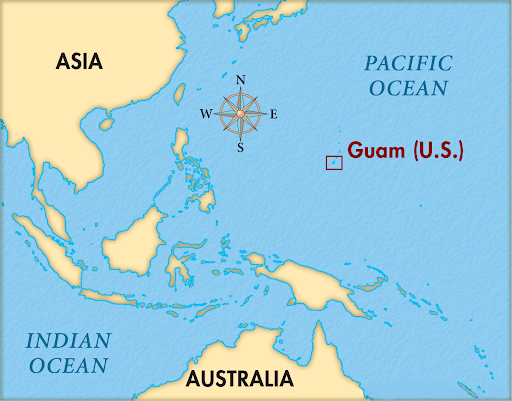International Relations
Malabar Exercise 2021
- 27 Aug 2021
- 4 min read
Why in News
Recently, the Navies of the Quad (Quadrilateral Framework) Nations (India, the United States, Japan, and Australia) have participated in the 25th edition of the Malabar Exercise, which began off the coast of Guam in the Pacific Ocean.
- Guam is a US island territory in the North Pacific Ocean, which is much closer to China in the East than to the US mainland in the West making it an ideal US military strategic outpost for Indo-Pacific operations.
Key Points
- Malabar Exercise:
- It is a multilateral war-gaming naval exercise that was started in 1992. It began as a bilateral exercise between the navies of India and the United States.
- Two more editions of the exercise were carried out in 1995 and 1996, after which there was a break until 2002 in the aftermath of India’s nuclear tests.
- From 2002 onward, the exercise has been conducted every year.
- Japan and Australia first participated in 2007, and since 2014, India, the US and Japan have participated in the exercise every year.
- In 2020 Australia joined the Malabar Exercise on India’s request in order to contain China in the Indo-Pacific region.
- For the first time in over a decade, Malabar 2020 saw the participation of all four Quad members.
- It is aimed to support free, open and inclusive Indo-Pacific and remain committed to a rules based international order.
- It is a multilateral war-gaming naval exercise that was started in 1992. It began as a bilateral exercise between the navies of India and the United States.
- Malabar 2021:
- This is the first joint maritime exercise within the framework of Quad in the Western Pacific and apparently aims to frighten China. It is being hosted by the US.
- Significance:
- Enhance Strategic Partnership:
- Such complex exercises have further enhanced synergy and mutual understanding among the four navies in undertaking joint maritime security operations, and will go a long way in further strengthening their already close strategic partnership.
- Sustainable Indo-Pacific Coalition:
- A major step towards building a sustainable Indo-Pacific coalition thereby addressing the massive strategic imbalance generated by an economically and militarily powerful China.
- There is a consensus, among many major liberal democracies, that China threatens the international system, liberal societies and a rules-based regime.
- A major step towards building a sustainable Indo-Pacific coalition thereby addressing the massive strategic imbalance generated by an economically and militarily powerful China.
- Peace through Sea:
- It is not a coincidence that as India-US ties improved in the mid-2000s, China was better behaved.
- It is only with economic strength and partnerships such as the one that will be manifested in the Malabar exercise that India can broaden its options with China.
- The road to peace in the mountains may lie through the sea.
- Enhance Strategic Partnership:
- Other Exercises with Quad Countries:
- India- Japan: JIMEX (naval exercise), SHINYUU Maitri (air force exercise), and Dharma Guardian (military exercise).
- India-US: Yudha Abhyas (Army), Vajra Prahar (Military), Spitting Cobra, SANGAM, RED FLAG, COPE INDIA.
- India-Australia: AUSINDEX (Maritime), AUSTRA HIND, Pitch Black
- Passage Exercises (PASSEX).
Quad
- It is a four-nation alliance of India, Australia, USA and Japan which was established in 2007.
- The idea of Quad was first mooted by former Japanese Prime Minister Shinzo Abe.
- It is often dubbed as an "Asian" or "mini" North Atlantic Treaty Organization (NATO), and is viewed as a counterbalance to China's military and economic clout in the Indo-Pacific region.
- Interestingly, the QUAD, which used to be known as the quadrilateral security dialogue, is now known as the quadrilateral framework to indicate it has gone beyond a narrow security dialogue.





